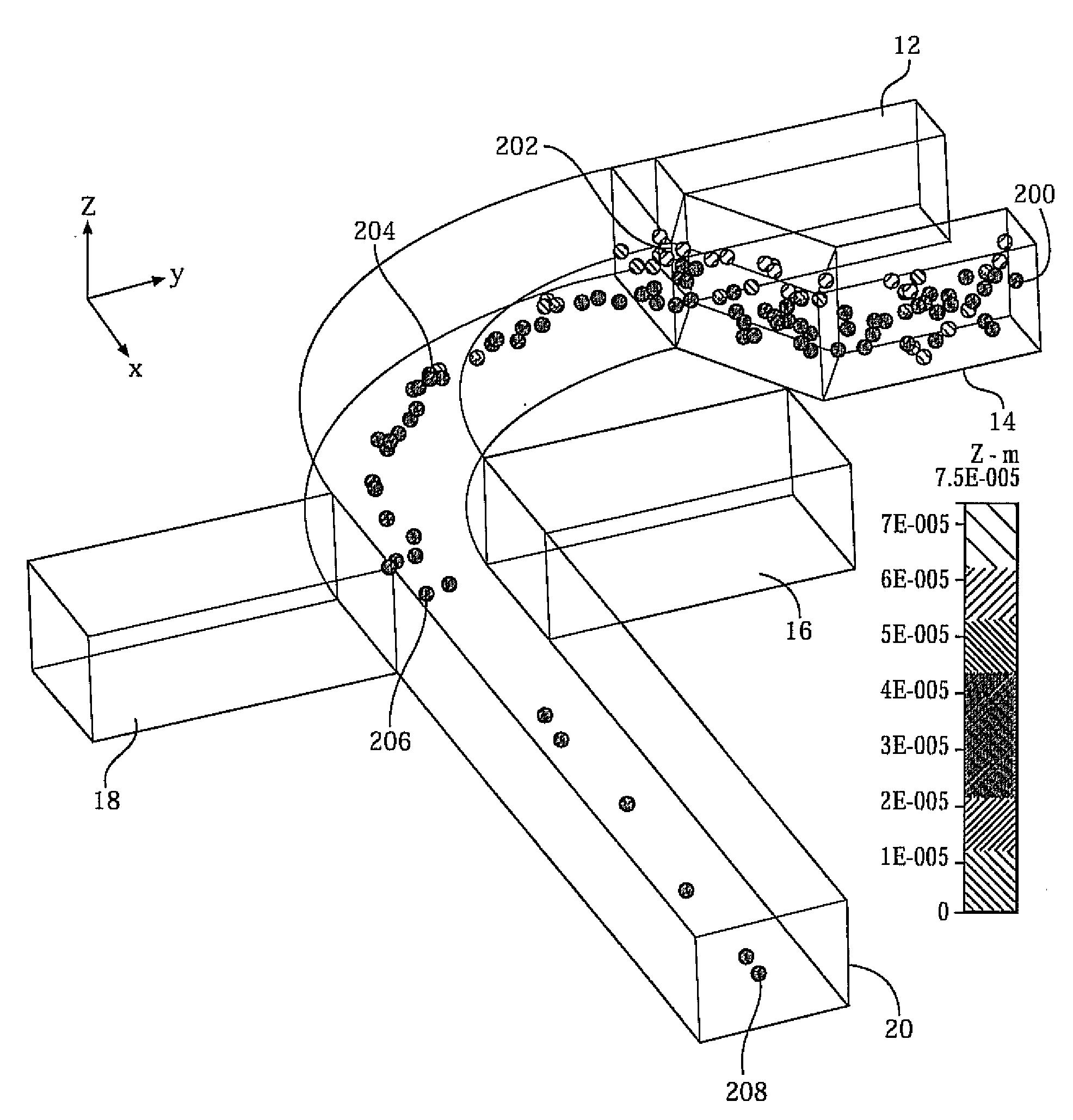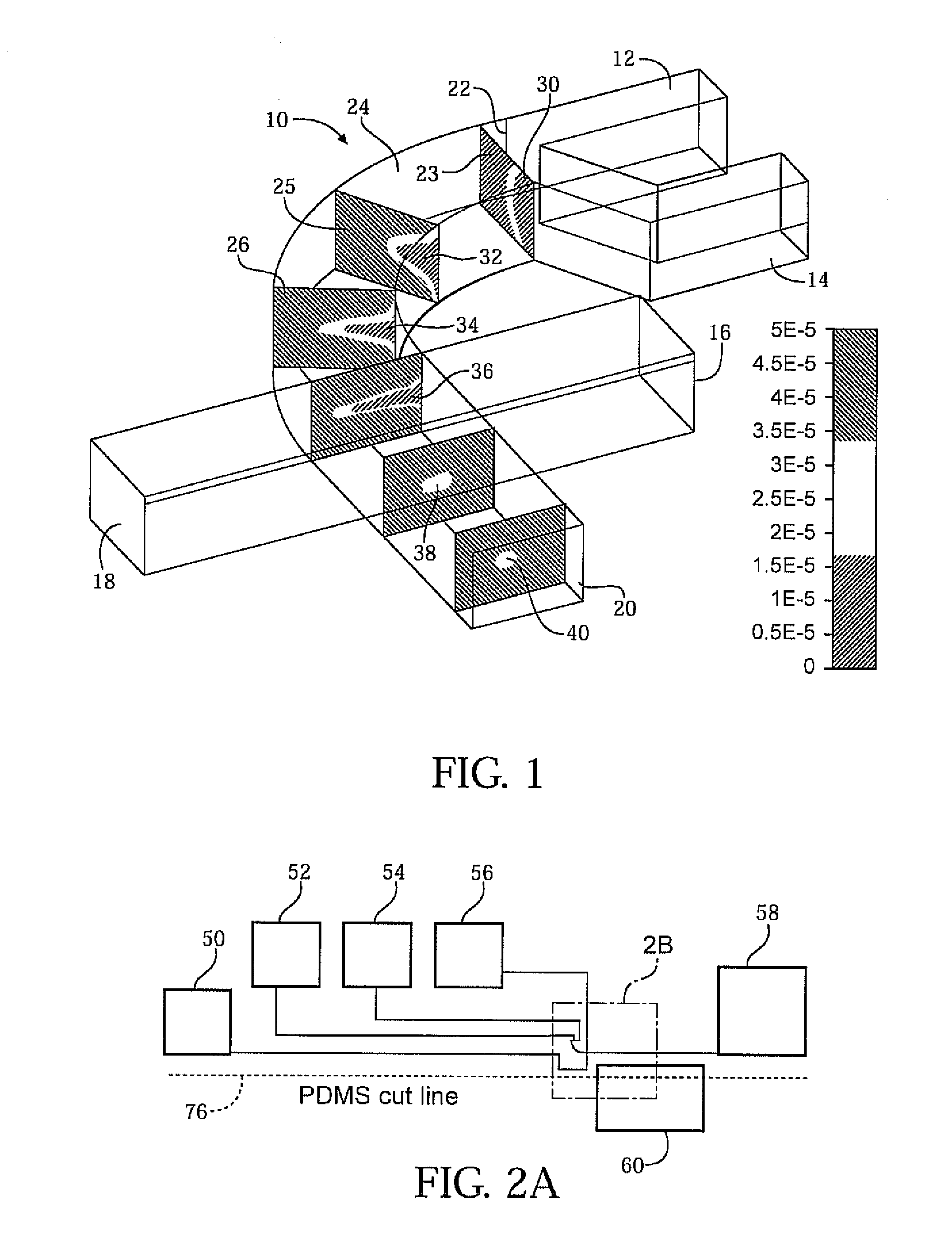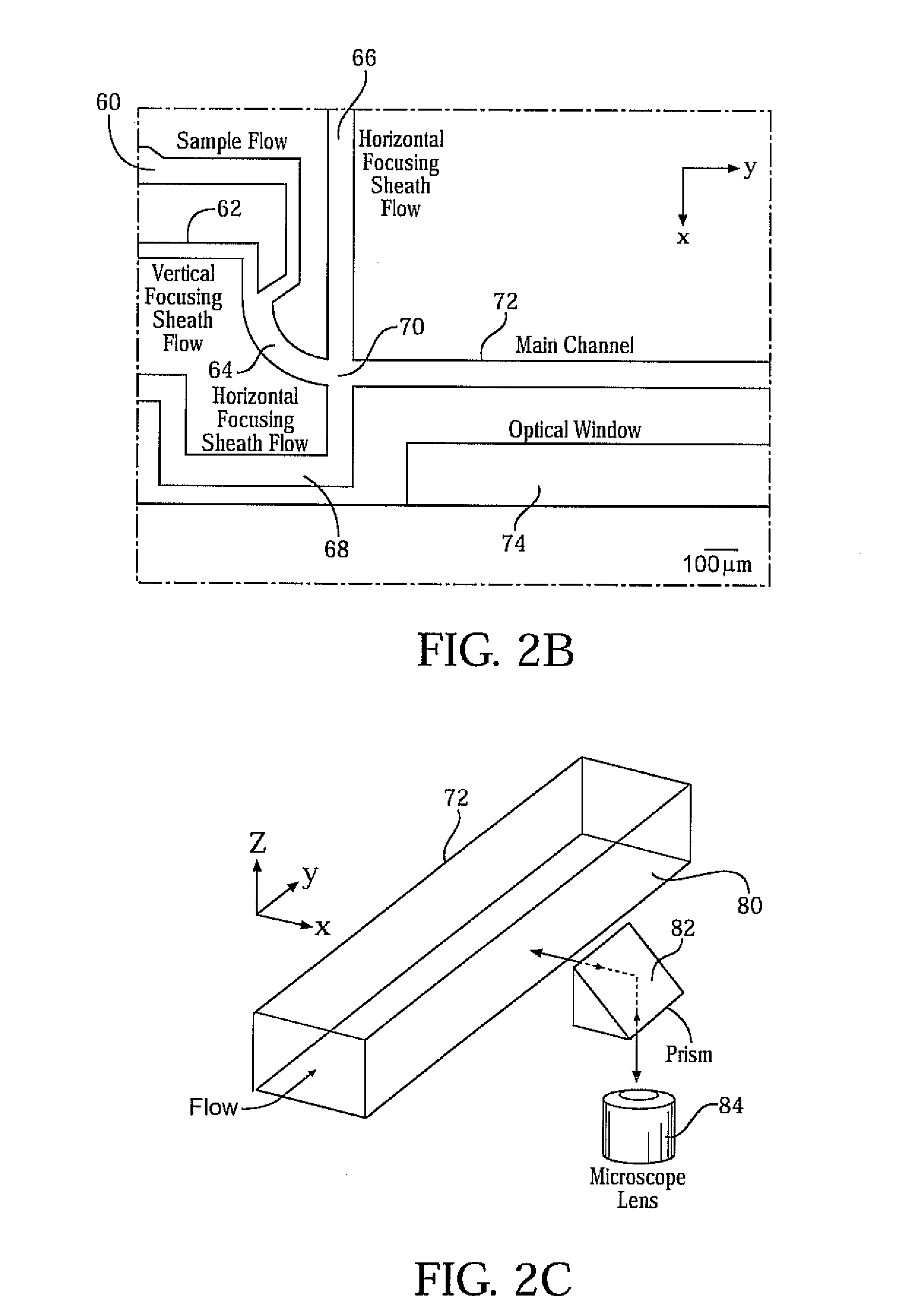Three-dimensional (3D) hydrodynamic focusing using a microfluidic device
a microfluidic device and hydrodynamic focusing technology, applied in the field of three-dimensional (3d) hydrodynamic focusing, can solve the problems of impracticality or less accuracy, and achieve the effect of more reliable single-molecule sensitivity
- Summary
- Abstract
- Description
- Claims
- Application Information
AI Technical Summary
Benefits of technology
Problems solved by technology
Method used
Image
Examples
example device fabrication
[0053]Polydimethylsiloxane (PDMS) microchannels were fabricated using a standard soft lithography technique. The master mold for the soft lithography was made on a silicon wafer (TechGophers, Chino Hills, Calif.) by Deep Reactive Ion Etching (DRIE, Adixen, Hingham, Mass.). The positive photoresist Shipley 1827 (MicroChem, Newton, Mass.) was lithographically patterned on the silicon wafer to act as a mask for DRIE, and the etch depth was set at 75 μm. The final mold depth was measured using a profilometer (KLA-Tencor, San Jose, Calif.) to ensure that the desired depth had been achieved.
[0054]The silicon mold was subsequently coated with 1H,1H,2H,2H-perfluorooctyltrichlorosilane (Sigma Aldrich, St. Louis, Mo.) after DRIE, in order to reduce surface energy and hence the damage to the PDMS channel during the demolding process. A smooth surface of the PDMS channel sidewall reduces scattering losses and improves the quality of side-view epifluorescence microscopy. Sylgard™ 184 Silicone El...
PUM
 Login to View More
Login to View More Abstract
Description
Claims
Application Information
 Login to View More
Login to View More - R&D
- Intellectual Property
- Life Sciences
- Materials
- Tech Scout
- Unparalleled Data Quality
- Higher Quality Content
- 60% Fewer Hallucinations
Browse by: Latest US Patents, China's latest patents, Technical Efficacy Thesaurus, Application Domain, Technology Topic, Popular Technical Reports.
© 2025 PatSnap. All rights reserved.Legal|Privacy policy|Modern Slavery Act Transparency Statement|Sitemap|About US| Contact US: help@patsnap.com



